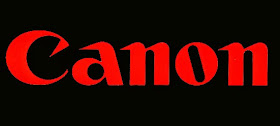The Canon Camera Museum has published a technical report on the EF 200-400mm f/4L IS USM Extender 1.4x lens. Below is an excerpt from the article. I have taken this lens on a few wildlife photo shoots under harsh conditions, ranging from the high Arctic to Africa. You can read my review of the lens here.
Development aims
We revamped four lenses in our EF super-telephoto lens series — the 300mm and 400mm in August 2011 and the 500mm and 600mm in May 2012 — to satisfy professionals and high-end amateurs. This product was developed with the aim of going one step beyond these lenses.
This lens is a super-telephoto lens with a built-in extender that has been newly designed so that one lens can cover a wide variety of shooting conditions and scenes. The extender switch lever lets users quickly switch the focal length range between 200-400mm and 280-560mm in one operation.
The lens carries a combination of fluorite and UD lens elements to deliver the image quality demanded of the super-telephoto lens series while also covering a focal length range of 200mm to 560mm with just one lens.
This high-power zoom lens is further equipped with superb operability alongside image stabilization functionality, reliable water and dust protection, and excellent durability.
The design carries forward the super-telephoto lens series' design concept and sensibility suitable for a flagship model while aiming for a high-grade feel and presence. The lens silhouette, which tapers from the front toward the mount, expresses the beauty of converging light. Each part has been expressly designed so that photographers can give their full attention to the shot. In keeping with this, the frequently used zoom ring has been placed in front of the focus ring (Figure 1).
The following sections describe the lens's main features.
 |
| Figure 1 |
The lens's optical system achieves the high image quality suitable for a super-telephoto lens, despite being a zoom lens, as well as provides image stabilization functionality and a built-in 1.4x extender for a completely new super-telephoto zoom lens. The lens is arranged with 25 elements in 20 groups. When the built-in 1.4x extender is in use, the lens consists of 33 elements in 24 groups (including one rear filter element). The built-in extender itself is organized with eight elements in four groups (Figure 2).
 |
| Figure 2 |
One fluorite lens element and one UD lens element are used in the first lens group and three of the four elements in the focusing lens group are UD elements. The inclusion of these elements drastically reduces the occurrence of chromatic aberrations that tend to appear as color fringing around subject edges, giving high-quality images with excellent resolution and contrast. These elements also help the lens deliver high image quality when the built-in extender is in use (Figure 3).
 |
| Figure 3 |
The inner focusing system is provided by the third lens group (elements 11 through 14) and image stabilization by the fifth lens group (elements 17 through 19), which shifts in parallel.
The biggest feature of the lens, the built-in extender, provides optimal optical characteristics over the entire focal length range. It is placed by making space within the sixth lens group in the lens's rear fixed lens groups.
The protrusion at the rear of the lens is used to house the built-in extender's optics when not in use.
Optimizing the lens arrangement and coatings virtually eliminates ghosting and flaring and achieves an excellent color balance. To cut ghosting caused by light sources within the frame, we used a subwavelength structure coating (SWC) on the front surface of the tenth lens group.
A fluorine coating is applied to the front and rear lens surfaces (not including the filter glass) that are exposed to the atmosphere so that any dust or contaminants on the lens surfaces can be easily wiped off with a dry cloth. The lens is also designed to minimize color fringing when used not only with the built-in extender but also with external extenders. The minimum focusing distance is two meters, regardless of the zoom position or whether the built-in extender is used. Click
here to read the entire article on Canon's website.
MichaelDanielHo.com


































